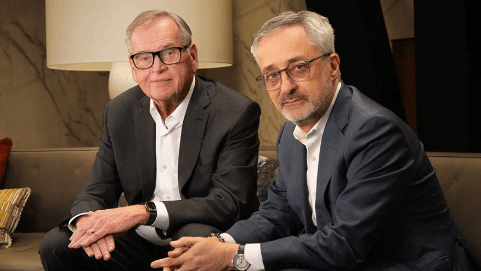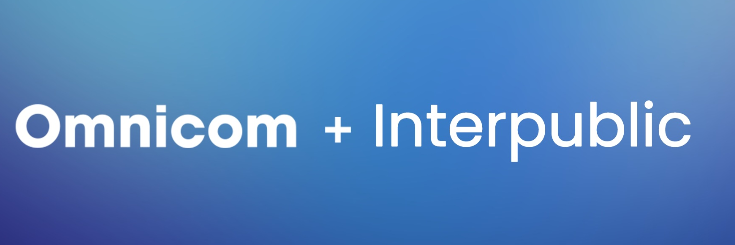Omnicom-IPG merger: A Christmas sugar hit followed by a strict diet?
Two of the big five agency holding companies, Omnicom and Interpublic, are set to merge. TrinityP3’s Stephen Wright breaks down the potential winners and losers from the deal and its implications for the Australian market.
‘Tis the season.
This week, the market paused to absorb the news of an epic US$13bn global merger between two of the big five holding companies – Omnicom and Interpublic.
This is massive news with repercussions across major advertising markets, including Australia. If I may extend the Christmas metaphor further, I worry this is a holiday sugar hit — designed to boost the share price and secure executive bonuses — but, as with all Christmas indulgences, January will bring a strict diet, and trimming down will begin in earnest.
Drivers of the Merger
Much has been written this week about the plan to combine Omnicom’s Omni and IPG’s Interact behavioral tools, IPG’s Acxiom identity layer, and Omnicom’s Flywheel for transactions. In an era of growing ecommerce, this is relevant, particularly for retail clients.
Omnicom is also positioning the merger as a key step toward its “AI-driven future”.
“If Interpublic was three-quarters of our size, yesterday I had $1 to invest in those efforts; now I have $1.67,” John Wren, chairman and CEO of Omnicom, told the media this week. “It should make me more agile and allow greater investment in testing new technologies and platforms to deliver better, more accurate information for our real knowledge workers.”

L-R: John Wren, chairman and CEO of Omnicom; Philippe Krakowsky, IPG CEO
However, beyond these points, the tangible client benefits are hard to see — particularly in the Australian market. Does this market need a new agency behemoth? Almost certainly not.
All the large holding companies already secure comparable rates and deals. A new behemoth is unlikely to extract greater value, especially as Omnicom is already the largest player in Australia. Media owners maintain strict control over inventory pricing, and reducing yield in 2025 is unlikely given current market headwinds.
If there’s a strategic client benefit, it is difficult to identify. Neither group possesses a must-have tool or system that will suddenly become widely available.
Client and Market Impact
Few local clients will have congratulated Peter Horgan on this acquisition. On the other hand, Mark Coad likely received concerned calls about the future of the media agency brands in the stable. Client demand has been shifting toward independents, with their nimble service models, senior personnel, and greater attentiveness — qualities increasingly attractive to clients.
The Issue of Conflict
Conflict remains a significant challenge, as evidenced by the failure of the 2013 Omnicom/Publicis “merger of equals”. It’s difficult to believe all seven major media agency brands — OMD, PHD, Hearts and Science, Resolution Digital, UM, Initiative, and Mediahub — will survive under the new structure.
Globally, no holding group operates more than four core brands. Decisions on which brands to retain will likely be driven by the US market rather than local needs, and we can expect at least one or two brands to disappear as part of the promised cost savings.

Cost Savings and Redundancies
The US$750 million in savings promised to the market suggests detailed plans are already in place. With Australia as the 7th largest advertising market, it’s plausible that the local market might be expected to contribute around US$30 million in savings — a figure that could mean significant redundancies and restructuring.
Both groups have already achieved savings by centralizing resources across their brands. Further cuts will require personnel reductions. Salaries and staff will bear the brunt. It will be telling to see which, if any, HR department first declares itself redundant.
Winners and Losers
So far, the winners aren’t immediately clear outside shareholders and senior leadership. The market didn’t ask for this merger, and the fundamental question remains: What problem is this merger trying to solve?
For the past decade, the race for scale has been relentless — an idea championed by Sir Martin Sorrell during his WPP tenure. The goal was to leverage scale to secure the best deals with media owners, but outside of Google and Meta, few media owners can offer meaningful advantages on this scale.
With regulatory, client conflict, and operational challenges ahead, the New Year will reveal whether this sugar rush was worth it. Staff, clients, and leadership alike must brace for the strict diet this regime will demand.

Stephen Wright is business director of Australia & global at TrinityP3.


“Designed to boost the share price and secure executive bonuses.”? During the pandemic both of these holdcos made sizeable staff cuts. Fair enough. But shortly afterwards, the US CEO of one of their media agencies was directed by its c-suite to make yet further staff cuts in order to ensure year end bonuses were definitely met. They protested that such drastic culling would render their agency not fit for purpose. The c-suite responded, “just hire some of them back later.” Merry Christmas everybody, and remember our people are our most important asset.
The critique of this merger as a “sugar hit” completely misses the bigger picture and is symptomatic of the knee-jerk skepticism doing the rounds right now. This move is designed to future-proof two industry leaders. Change is a necessary evolution to survive and thrive in a market that demands agility, scale, and innovation. Let’s stop romanticising the nimbleness of independents and start recognising the benefits that come with global integration.
This merger isn’t a December indulgence; it’s a blueprint for the next decade of agency dominance. But don’t let that get in the way of a good bit of clickbait…
Clients haven’t been generous on rates for years, so why shouldn’t agencies prioritise scale and innovation to stay competitive?
Global consolidation isn’t a novelty—it’s a necessity in today’s economy. Scale drives agility, better rates, and smarter investment. And this merger hasn’t come out of nowhere—the smart players have time to reskill and prove their value.
What’s your alternative? Romanticising the past won’t solve the challenges of the future. Let’s focus on solutions, not nostalgia.
Wow…’the next decade of agency dominance’.
Sounds like a power trip to me.
Redundancies and the human cost irrelevant in the pursuit of global dominance.
Future proofing through scale isn’t what the market needs.
Very very few clients would be popping champagne corks in celebration.
Yes, yes but what is the new name going to be?
I’m betting on Omnintercom ?